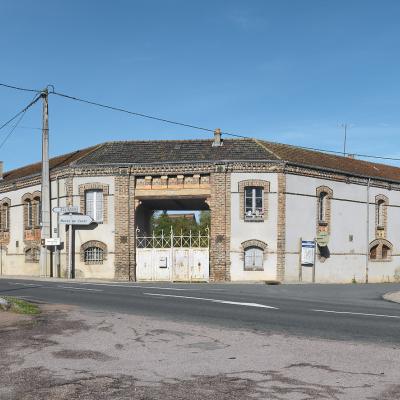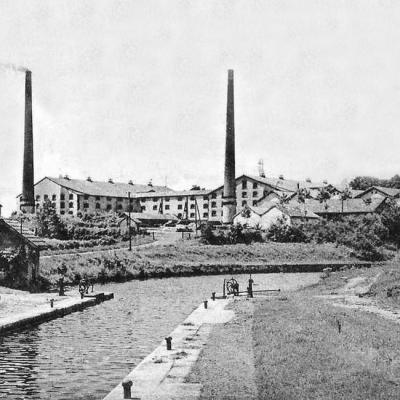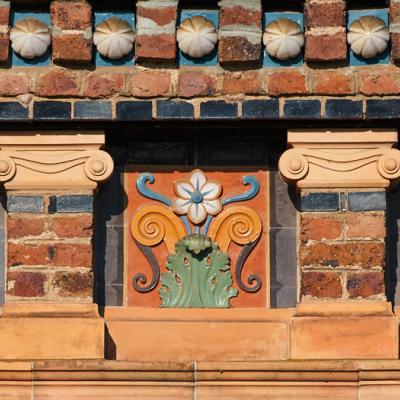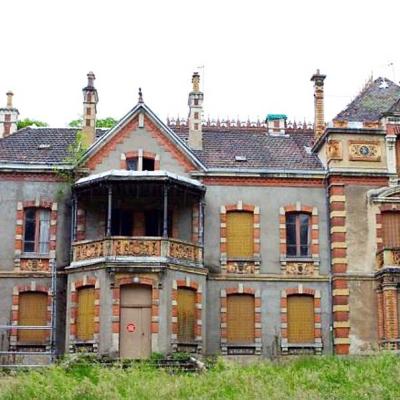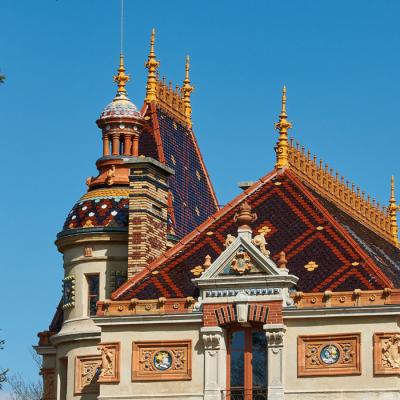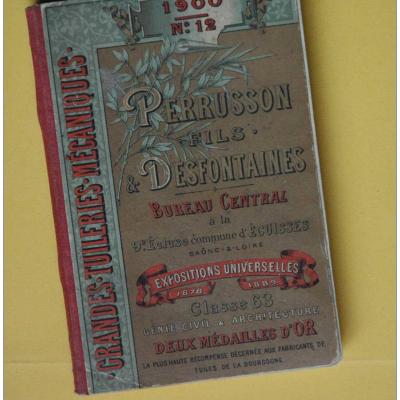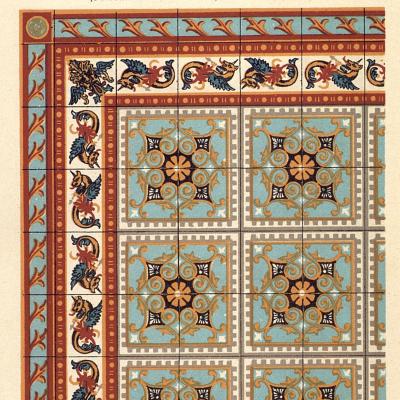A magnificent 19.5m2 / 210 sq ft. Perrusson floor c.1900
A Masterpiece of Belle Époque Craftsmanship
Step into the legacy of French decorative arts with this extraordinary 19.5m² / 210 sq ft. handmade ceramic encaustic floor, created circa 1900 by the prestigious Perrusson et Fils of Desfontaines Ecluses, Saone et Loire, France. More than a collection of tiles, this floor is a rare survivor from the golden age of European tile-making—a finely crafted legacy from the heart of the Belle Époque.
Provenance with Prestige
- Manufacturer: Perrusson et Fils, celebrated 19th-century ceramicists who helped define French architectural ceramic design
- Origin: Reclaimed from a grand Haussmann-style hotel in the Bresse region of France—an edifice shaped by the opulence of the Second Empire aesthetic
- Historic Catalogue Reference: The tiles are featured in the 1900 Perrusson factory catalogue, affirming authenticity and historical importance
Myth, Art, and the Mosaic of Imagination
- Mythical Borders: Full-size and half-size borders; the full size border depicts a fantastical beast—a lion’s head with an alicorn and serpents tongue, the body with a fishtail and feathered wings—symbols steeped in classical myth and Art Nouveau fantasy. The beautiful border corner tiles, the full contingent of four having been reclaimed, is of a wind blowing mythical God
- Central Pattern: A four-tile tessellation with rich, symmetrical geometry—designed to evoke navigational motifs and timeless harmony
- Craftsmanship: Each 17cm / 6.7 inch sq. tile is 17mm / 0.67 inches thick, handmade, highly fired, and weighs over 1kg / 2,20lbs —testament to the artisanal integrity of turn-of-the-century French ceramics
Functional Beauty Meets Enduring Quality
- Durability: High-fired clay ensures suitability for modern installations, indoors or out, including compatibility with underfloor heating systems
- Complete Configuration: A full original layout with corners and framing borders intact—rare for reclaimed floors of this age and complexity
A Living Piece of Decorative History
Recovered from a space once designed to impress society's elite, this floor now invites new stewards to celebrate and preserve its story. The now-closed Perrusson factory once epitomized ceramic excellence; its restored family home, adorned entirely in their own tiles, stands as a vibrant museum to their legacy.
This floor doesn’t simply decorate—it commemorates a moment in architectural and decorative history when myth met masonry, and artisans left their indelible mark on French design.
FIELD TILES – 490 tiles – 14.2m2 / 153 sq ft
LARGE BORDERS – 92 tiles plus 4 corners - 2.8m2 / 30 sq ft or 16.3 linear metres / 53.5 linear feet
HALF SIZE BORDERS – 168 tiles plus 8 corners – 2.5m2 / 27 sq ft or 29.2 linear metres / 96 linear feet
Ceramiques Perrusson Fils, Ecluses - a brief history;
Jean-Marie Perrusson was not only known for ceramic tile production but also for the production of bricks and roof tiles. Many of the lozenge themed terracotta mechanical tiles in Burgundy bear the Perrusson hallmark. He built his first brick making factory in 1860 and started mechanical tile production in 1863, to which he added a workshop for manufacturing ceramic tiles in 1875. Further expansion of the ceramic tile production in the Saône-et-Loire was initiated (in Saint-Julien-sur-Dheune in 1866, St. Pantaleon 1870), and even beyond the department (in Sancoins Cher in 1870 and Fontafié in Charente in 1878).
The company was renamed ‘Perrusson Fils et Desfontaines’ in 1890 and the factory also manufactured architectural ceramics and statues. In April 1960 the factory finally closed its doors. The vast majority of the original buildings constructed in 1890/1900 are destroyed with the offices, changing rooms of the factory, the concierge and the electrical workshop the only significant remnants of the site that can still be seen. The Perrusson factory employed 40 workers in 1860, 80 by 1874, 130 in 1890, 300 at its peak in 1900, 280 in 1930 and 130 during 1945 to 1950.
NOTE - Antique tiles were most commonly made in single or two tile moulds. Before current computer automation methods their moulds were made my hand and the colour slips mixed by eye. Kiln temperatures could also be variable, as could the firing time. The result is that often tiles display subtle size and thickness variations and there can be tonal variations in colours, owing to the slip mixing and/or firing time. All of this makes these handmade tiles unique and adds to their charm. Some floors display their subtle variations in size and tones, some not, but when photographing we always take a random section of the floor so that it is representative of the whole. A tiler should always dry lay a section of the tiles to familiarise himself with them before starting to fix lay.
CE267





